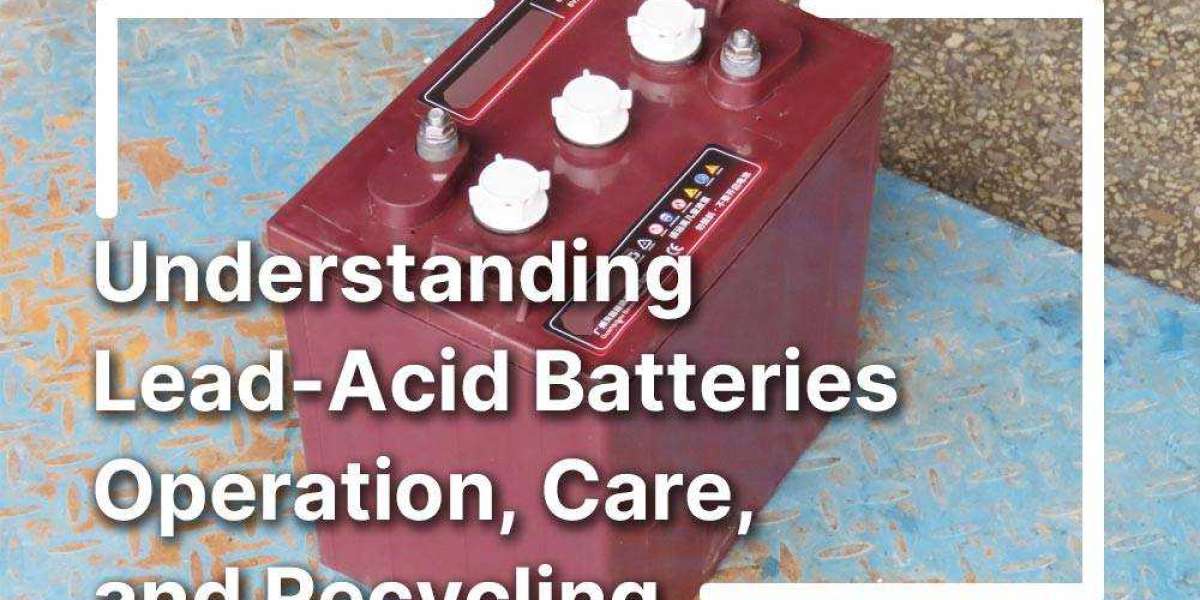Lead-acid batteries have been an integral part of our lives for over a century, powering everything from vehicles to industrial equipment. Their robustness, reliability, and cost-effectiveness make them a preferred choice for various applications. In this comprehensive guide, we'll delve into the intricacies of lead-acid batteries, exploring their composition, chemistry, advantages, limitations, applications, maintenance, and environmental impact.

Introduction to Lead-Acid Batteries
What are lead-acid batteries?
Understanding Lead-Acid Batteries is important. Lead-acid batteries are rechargeable energy storage devices that utilize a chemical reaction between lead, lead oxide, and sulfuric acid to generate electricity. They are commonly used in vehicles, uninterruptible power supplies (UPS), and off-grid renewable energy systems.
History and development of lead-acid batteries.
Lead-acid batteries have a rich history dating back to the mid-19th century when French physicist Gaston Planté invented the first practical version. Over the years, advancements in technology have improved their efficiency and reliability, leading to widespread adoption across various industries.
Importance and widespread usage.
Lead-acid batteries play a crucial role in modern society, providing reliable power for transportation, telecommunications, and emergency backup systems. Their versatility and affordability make them indispensable in both developed and developing economies.
Composition and Structure
Lead-acid batteries consist of several key components, including lead plates, sulfuric acid electrolyte, separators, and a plastic casing. The internal structure comprises positive and negative plates immersed in an electrolyte solution.
Chemistry Behind Lead-Acid Batteries
The operation of lead-acid batteries relies on electrochemical reactions between lead dioxide (PbO2), lead sulfate (PbSO4), and metallic lead (Pb) during charging and discharging cycles. When discharging, sulfuric acid reacts with the lead plates to produce lead sulfate and release electrical energy. Charging reverses this process, restoring the lead plates to their original state.
Types of Lead-Acid Batteries
Lead-acid batteries come in various configurations, with the two main types being flooded and sealed batteries. Flooded batteries require regular maintenance, while sealed batteries, such as Absorbent Glass Mat (AGM) and Gel batteries, offer maintenance-free operation.
Advantages of Lead-Acid Batteries
Lead-acid batteries are favored for their affordability, durability, and wide availability. They can withstand deep discharges and operate in extreme temperatures, making them ideal for demanding applications such as automotive starting, lighting, and ignition (SLI) systems.
Disadvantages and Limitations
Despite their many benefits, lead-acid batteries have some drawbacks, including their relatively low energy density, weight, and limited cycle life compared to newer battery technologies like lithium-ion.
Applications
Lead-acid batteries find extensive use in the automotive industry for starting, lighting, and ignition (SLI) systems, as well as in renewable energy systems for storing excess electricity generated from solar panels or wind turbines.
Charging and Maintenance
Proper charging techniques and regular maintenance are essential for maximizing the lifespan and performance of lead-acid batteries. Overcharging can lead to the formation of harmful gases and premature failure, while inadequate maintenance can result in sulfation and reduced capacity.
Safety Considerations
Lead-acid batteries contain sulfuric acid, which can cause severe burns if mishandled. Proper safety precautions should be followed when handling, charging, or disposing of lead-acid batteries to prevent accidents and environmental contamination.
Environmental Impact and Recycling
Lead-acid battery recycling is highly regulated due to the toxic nature of lead and sulfuric acid. Recycling facilities extract valuable materials from spent batteries, such as lead, plastic, and electrolyte, which are then used to manufacture new batteries or other products.
Future Prospects and Innovations
Advancements in lead-acid battery technology, such as enhanced electrode designs and electrolyte formulations, promise to improve performance and extend cycle life. Integration with renewable energy systems is also driving innovation in the lead-acid battery industry.
Comparative Analysis with Other Battery Technologies
While lead-acid batteries remain popular for certain applications, they face stiff competition from newer battery technologies like lithium-ion, which offer higher energy density, lighter weight, and longer cycle life. However, lead-acid batteries continue to excel in terms of cost-effectiveness and reliability.
Case Studies
Real-world examples showcase the versatility and effectiveness of lead-acid batteries in various applications, from powering forklifts in warehouses to providing backup power for critical infrastructure during emergencies.
Tips for Choosing and Using Lead-Acid Batteries
When selecting a lead-acid battery, factors such as capacity, voltage, and application requirements should be carefully considered. Proper installation, charging, and maintenance practices are essential for optimizing battery performance and longevity.
Conclusion
Lead-acid batteries remain a cornerstone of energy storage technology, offering a combination of affordability, reliability, and versatility that is unmatched by other battery types. Despite the emergence of newer technologies, lead-acid batteries continue to play a vital role in powering our modern world.
FAQs
Are lead-acid batteries suitable for solar energy storage?
- Yes, lead-acid batteries are commonly used in off-grid and grid-tied solar energy systems due to their reliability and cost-effectiveness.
- Yes, lead-acid batteries are commonly used in off-grid and grid-tied solar energy systems due to their reliability and cost-effectiveness.
Can lead-acid batteries be recycled?
- Absolutely. Lead-acid batteries are one of the most recycled consumer products, with up to 99% of their components being reprocessed for reuse.
- Absolutely. Lead-acid batteries are one of the most recycled consumer products, with up to 99% of their components being reprocessed for reuse.
What is the typical lifespan of a lead-acid battery?
- The lifespan of a lead-acid battery varies depending on factors such as usage, maintenance, and environmental conditions, but it typically ranges from three to five years.
- The lifespan of a lead-acid battery varies depending on factors such as usage, maintenance, and environmental conditions, but it typically ranges from three to five years.
How should I dispose of a used lead-acid battery?
- Used lead-acid batteries should be returned to a recycling center or authorized battery retailer for proper disposal to prevent environmental contamination.
- Used lead-acid batteries should be returned to a recycling center or authorized battery retailer for proper disposal to prevent environmental contamination.
Can I use a lead-acid battery in extreme temperatures?
- Lead-acid batteries can operate effectively in a wide range of temperatures, but extreme cold can affect their performance and capacity temporarily.



